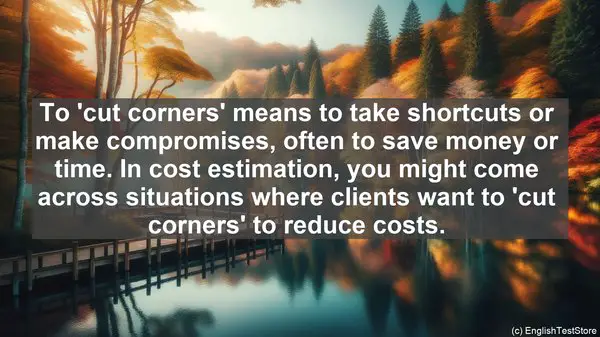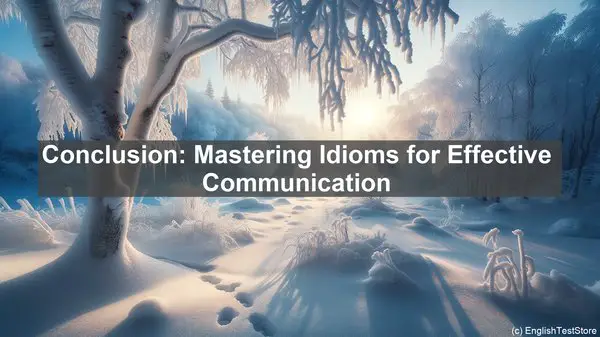Introduction: The Power of Idioms
As a cost estimator, you know the importance of accurate estimates. But did you know that mastering English idioms can also be a valuable skill in your profession? Idioms are phrases that convey a figurative meaning, often unique to a language. They add depth, color, and precision to your communication. Today, we’ll explore the top 10 English idioms that every cost estimator should be familiar with. Let’s get started!
1. Ballpark Figure: A Rough Estimate
When you’re asked for a ‘ballpark figure,’ it means they’re looking for a rough estimate, not an exact number. It’s like giving a general idea of the cost, without going into too many details. For example, if a client asks, ‘What’s the cost of this project?’ You can say, ‘I can give you a ballpark figure of around $50,000.’ It sets the expectation without committing to a specific amount.
2. Penny Pincher: Someone Who’s Extremely Frugal
A ‘penny pincher’ is someone who’s very careful with their money and hates to spend unnecessarily. In the world of cost estimation, you might come across clients who are ‘penny pinchers.’ They’ll scrutinize every expense and try to find ways to cut costs. It’s important to understand their mindset and find cost-effective solutions that meet their requirements. So, when you hear the term ‘penny pincher,’ you know it’s time to put on your creative thinking cap!
3. In the Red: Financial Loss
If a project is ‘in the red,’ it means it’s in a state of financial loss. The term originates from accounting, where negative numbers are often written in red. As a cost estimator, your goal is to keep projects ‘in the black,’ meaning they’re financially profitable. So, when you’re discussing the financial status of a project, you can say, ‘Currently, we’re in the red, but with some adjustments, we can turn it around.’ It shows your awareness of the situation and your commitment to finding solutions.
4. Golden Handcuffs: High Salary, but Limited Freedom
While a ‘golden handcuffs’ job might sound appealing, it comes with its own set of challenges. It refers to a job that offers a high salary but limited freedom or opportunities for growth. In the world of cost estimation, you might be tempted by a job that offers a hefty paycheck, but if it restricts your professional development, it might not be the best choice in the long run. So, when considering job offers, remember to look beyond the ‘golden handcuffs.’
5. Cut Corners: Sacrificing Quality for Cost
To ‘cut corners’ means to take shortcuts or make compromises, often to save money or time. In cost estimation, you might come across situations where clients want to ‘cut corners’ to reduce costs. It’s crucial to explain the potential consequences of such decisions, especially when it comes to compromising on quality. Sometimes, it’s better to invest a little more upfront to ensure a better outcome in the long term.
6. Cash Cow: A Highly Profitable Venture
A ‘cash cow’ refers to a business or project that generates a consistent and significant profit. It’s like a reliable source of income. As a cost estimator, identifying potential ‘cash cows’ is essential. These are the projects that not only bring in revenue but also have the potential for growth and expansion. So, when you’re discussing project options, keep an eye out for the ‘cash cow’ opportunities.
7. Back-of-the-Envelope Calculation: Quick Estimation
Sometimes, you don’t have the luxury of time for a detailed cost estimation. That’s when a ‘back-of-the-envelope calculation’ comes in handy. It’s a quick, rough estimation done using basic information. While it’s not as accurate as a comprehensive analysis, it gives you a ballpark idea. So, when you’re pressed for time, don’t hesitate to do a ‘back-of-the-envelope calculation’ to get a quick estimate.
8. Elephant in the Room: An Obvious Problem
An ‘elephant in the room’ refers to an obvious problem or issue that everyone is aware of but no one wants to address. In cost estimation, there might be ‘elephants in the room’ that need to be acknowledged and discussed. It could be factors that significantly impact the cost but are often overlooked. By addressing these ‘elephants,’ you ensure a more accurate and comprehensive estimation.

9. Wild Goose Chase: A Futile Search
A ‘wild goose chase’ is a fruitless or futile search, often characterized by a lot of effort but no tangible results. In cost estimation, you want to avoid ‘wild goose chases.’ These are situations where you’re spending time and resources on tasks or activities that don’t contribute to the overall goal. It’s important to prioritize and focus on the essential aspects to ensure an efficient and effective estimation process.
10. Devil’s Advocate: Challenging Assumptions
Being a ‘devil’s advocate’ means taking a contrary or skeptical position, often to challenge assumptions or conventional thinking. In cost estimation, playing the ‘devil’s advocate’ can be valuable. It helps uncover potential risks or flaws in the estimation process and prompts a more thorough analysis. So, don’t shy away from being the ‘devil’s advocate’ when it comes to cost estimation discussions.

Conclusion: Mastering Idioms for Effective Communication
English idioms are more than just phrases. They’re a reflection of the language’s rich history and culture. As a cost estimator, mastering these idioms not only enhances your vocabulary but also improves your ability to communicate with clients, colleagues, and stakeholders. So, make it a part of your learning journey. Remember, in the world of cost estimation, precision and clarity go hand in hand. Thank you for watching, and until next time, happy estimating!
